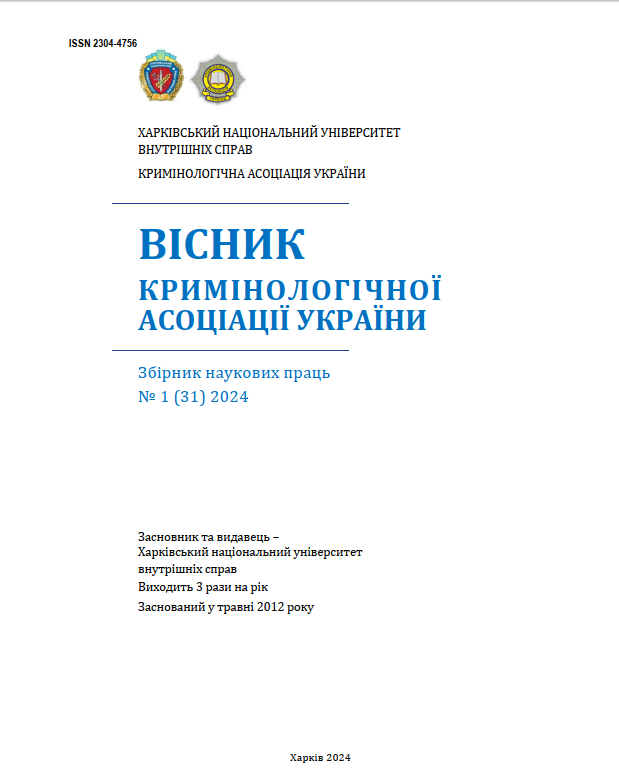МЕДІАЦІЙНА ПРОЦЕДУРА ПІД ЧАС РОЗГЛЯДУ ЖИТЛОВИХ СПОРІВ
DOI:
https://doi.org/10.32631/vca.2024.1.41Ключові слова:
медіація, форма захисту, спосіб захисту, житло, врегулювання спору, медіаційна угода, медіаційна процедура, медіаторАнотація
У статті з’ясовано особливості медіаційної процедури під час розгляду
житлових спорів. Наголошено, що інститут медіації є одним із засобів
захисту прав в межах неюрисдикційної форми захисту прав, зокрема
цивільних, сімейних, житлових. Вказано, що житлові спори включають спори
щодо: приватизації житла; примусового виселення із житла; вселення до
житла; набуття права на житло; схоронності житлового фонду;
розірвання договору житлового найму; припинення сервітуту на
проживання; надання житлово-комунальних послуг тощо. Визначено, що
медіація може бути застосована: 1) до виникнення спору, тобто як міра
запобігання (медіатор буде виконувати функції щодо формування
волевиявлення сторін, спрямованого на запобігання конфлікту та їх
правомірної поведінки); 2) як процедура розв’язання вже існуючого спору
(медіатор вже вступає у стан динаміки спірного правовідношення, його
функція спрямовується на захист прав та відновлення режиму законності). Альтернативне розв’язання спору проводиться у межах медіаційної
процедури. Врегулювати спір можливо шляхом укладання медіаціної угоди.
Наголошено, що медіація припиняється внаслідок: закінчення строку
проведення медіації та/або дії договору про проведення медіації;
дострокового завершення медіаційної процедури (у разі відмови хоча б однієї
зі сторін медіації або медіатора (медіаторів) від участі в медіації); 3)
фактичної неможливості проведення подальшої процедури медіації (у разі
смерті фізичної особи, яка є стороною медіації, або ліквідації юридичної
особи, яка є стороною медіації; у разі визнання сторони медіації або
медіатора (медіаторів) недієздатною особою або особою, цивільна
дієздатність якої обмежена).
Завантажити
Завантаження
Опубліковано
Номер
Розділ
Ліцензія
Авторське право (c) 2024 В.І. ТЕРЕМЕЦЬКИЙ, О.Є. АВРАМОВА

Ця робота ліцензується відповідно до ліцензії Creative Commons Attribution 4.0 International License.

